The EMGS Scientist Spotlight is a member-exclusive blog highlighting the achievements and careers of our esteemed members.
Want to be one of our Spotlighted Scientists? Click HERE to apply.
  
|
Posted By Willow Frasier,
Friday, August 2, 2024
|
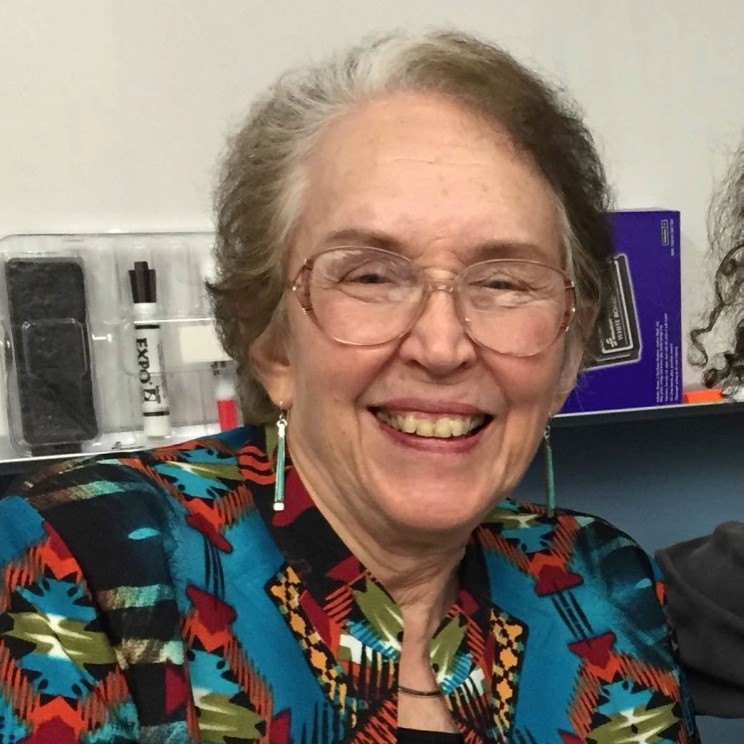 Dr. Miriam C. Poirier Dr. Miriam C. Poirier
Retired
Tell us a bit about your scientific and educational background.
Currently I am a Scientist Emeritus at the National Cancer Institute (NCI), National Institutes of Health (NIH), where I worked since 1971. For the last 20 years of my career I was Head of the Carcinogen-DNA Interactions Section in the Center for Cancer Research. After finishing an undergraduate degree in Chemistry I was accepted by the University of Wisconsin where I received an MS in Oncology and became interested in chemical carcinogenesis, which had been recently-discovered to be driven by DNA damage.
Subsequently I was married and had three children, and in 1971 moved to Bethesda where I began working at the NCI. While still a technician, I was given the opportunity to complete (in 1977) my PhD part time at the Catholic University of America. One of the classes I took was Immunology, where I learned about radioimmunoassays, which were being used to measure ultra-low levels of human metabolites and hormones. My idea was to raise antibodies against carcinogen-DNA adducts or carcinogen-modified DNA and apply antibody-based methodologies to search for DNA adducts in humans. Over the course of the next 40 years my associates and I pioneered the evaluation of DNA adduct formation in human tissues, in studies that enabled the development of molecular cancer epidemiology.
What do you see as the greatest value or most rewarding aspect of your scientific work?
At the time I received my PhD there were no methods to measure DNA adducts in humans. Using radiolabeled carcinogens many investigators had documented the importance of DNA adduct formation in cell transformation, mutagenesis and carcinogenesis in experimental models, but the role of DNA damage in human cancer induction was essentially unknown. The DNA-adduct immunoassays, 32P-postlabelling, and mass-spectrometry were the first non-invasive methods to measure DNA adducts, and were all applied to human tissues starting in the early 1980s. Since that time it has been possible to document human DNA adduct formation occurring as a result of many types of exposures (lifestyle, ambient, occupational, medicinal and dietary) and elucidate the contribution of DNA damage to human cancer etiology (see Poirier, M.C, Env. Mol. Mut., 57:499, 2016). Throughout my career I have been the fortunate recipient of excellent mentoring, as well as the support of many impressive co-workers, students and collaborators. Without them, these accomplishments would not have been possible.
What initially drew you to the EMGS?
In the early years of the EMS there was a fairly narrow focus on mutagenesis, which was not a great fit for my lab. However, as topics broadened and I got to know more EMS members I realized that the annual meeting of a smaller society was a better place to showcase the work of my students than meetings of the much larger societies like SOT and AACR. The EMS annual meeting was always a welcoming place where my students could become known for their contributions and find collaborators. I am proud of the fact that many alumni from my lab have served EMGS in leadership positions and some have maintained long-term memberships.
How has EMGS impacted your professional development?
What comes to my mind first are the many friendships and collaborations that have allowed me, over the years, to do better science, generate more extensive data, and publish more solid papers, than would otherwise have been possible. Among the greatest honors of my life have been opportunities to serve the EMGS as Council member, SIG Leader, Committee Chair and President. I have learned a great deal from these experiences and have thoroughly enjoyed the many friends I have made in the process. I was particularly honored in 2015 to receive the Alexander Hollaender award, as Hollaender was one of my heroes.
What advice would you offer to students or early career investigators?
To aspiring young scientists who wish to pursue a career in research I would say - pick an important question to study, collaborate, and publish as much as possible. Always pay close attention to what your data is telling you because it might not be what you expect. Don’t be afraid to think outside the box. Be aware that most novel findings are not easily accepted by scientific peers. Cutting-edge studies typically have problems with peer acceptance, grant support and publication. The battles required for validation and acceptance are not for the faint of heart. The mentoring you receive and give will constitute critical components of your scientific success. If you find yourself in a lab with a dysfunctional culture, do not hesitate to look for something that is a better fit. The loss of time will be offset by enhanced productivity in a supportive environment.
This post has not been tagged.
Permalink
| Comments (0)
|
  
|
Posted By Administration,
Friday, June 14, 2024
|
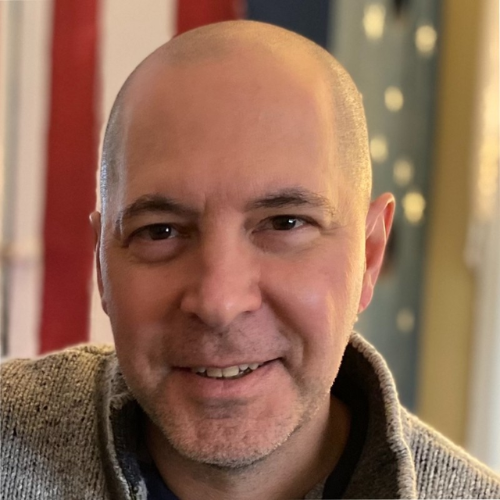 Stephen Dertinger Stephen Dertinger
Litron Laboratories
Tell us a bit about your scientific and educational background.
I was fortunate to have a series of excellent and encouraging science teachers. In high school, Ernie Ladd taught an A.P. biology course that really inspired me to think about a career in the sciences. Importantly, he took the time and interest to point out a newly created biotechnology program at the Rochester Institute of Technology.
At Rochester Institute of Technology, Professors Jean Douthwright and Irene Evans used their new program to teach students the fundamentals of biological sciences and to introduce us to the exciting molecular biology techniques that were just starting to come into wide practice. They really helped me understand a career in science and the associated challenges of keeping up with advances would be a rewarding choice.
Fortunately, my education continued in important ways at my first job out of college. I was hired as a technician by Andrew Tometsko (AT) at Litron Laboratories. I have so many fond memories and learnings from this time, too many to share here. Let me provide one noteworthy, early lesson: “If it’s real, it’s reproducible” (AT, circa 1990). What more is there to say?!
I circled back for additional formal training in the University of Rochester’s toxicology program. There, I had the great privilege of being mentored by Thomas Gasiewicz, who ran a world-renowned AhR receptor/dioxin lab. Among many other things, Tom instilled in his students the value of orthogonal approaches to solve stubborn puzzles.
What do you see as the greatest value or most rewarding aspect of your scientific work?
Together with my amazing co-workers at Litron, I’ve enjoyed working on assays that seek to more efficiently and comprehensively evaluate chemicals for genotoxic potential. This work has introduced me to fantastic colleagues and collaborators that always challenge us to do more. I love this type of environment that constantly asks us to do more, and expects continuous improvement. Kaizen!
What initially drew you to the EMGS?
The scientific content of the annual meetings is always compelling. There is so much important information presented, information that ends up influencing how we do things here at Litron on a daily basis. Also, to this day, EMGS meetings have provided a key mechanism for us to receive knowledgeable experts’ feedback on our ongoing lines of investigation.
How has EMGS impacted your professional development?
EMGS and sister societies is where I can count on networking with so many of the leaders in the field of genetic toxicology. EMGS has provided such a welcoming environment, and it really does a great job encouraging discussions about next steps, useful collaborations, etc.
The problem with a list is that it will be incomplete, but this is where I’ve met and gotten to know so many leaders in our field. For instance, this is the venue where I got to know, and began working with Jim MacGregor, John Heddle, Makoto Hayashi, Bob Heflich, Vasily Dobrovolsky, Ray Tice, David Kirkland, Maik Schuler, Kristine Witt, David Lovell, Leon Stankowski, Anthony Lynch, Paul White, Francesco Marchetti, George Douglas, Carole Yauk, Stefan Pfuhler, Andreas Zeller, George Johnson, Rosie Elespuru, Stephanie Smith-Roe, Bevin Engelward, Errol Zeiger, George Hoffman, the list goes on. My kids would say I’m flexing, knock it off. No, I’m sharing this impressive, incomplete list of people just to say this was only possible due to EMGS and the ecosystem they created and have maintained. It has enabled me to work with a truly amazing group of people, and this has enabled our very best work.
What advice would you offer to students or early career investigators?
I’ll provide two answers for the price of one. First: read, then read some more. I’m not just talking about your exact scientific area, I mean broadly. Our most useful advances all originated from some insight that came from some other, non-genetic toxicology discipline. Second: attend EMGS annual meetings. The networking and mentoring opportunities are there, lean in and take advantage of them. The people there want to help, they want to see you succeed.
This post has not been tagged.
Permalink
| Comments (0)
|
  
|
Posted By Willow Frasier,
Tuesday, April 2, 2024
|
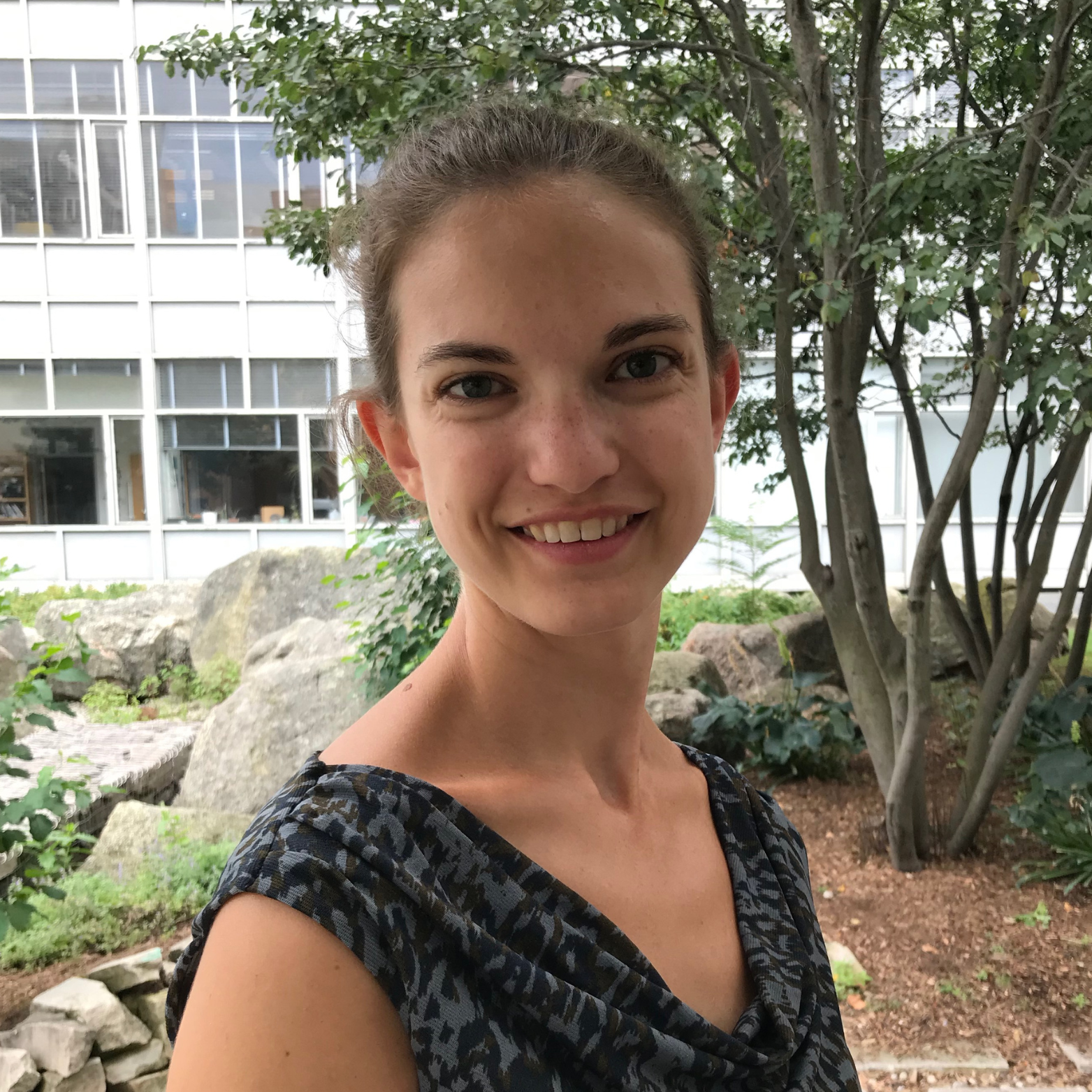 Jennifer Kay Jennifer Kay
Silent Spring Institute
Tell us a bit about your scientific and educational background.
After exploring a few areas of bioscience-related engineering research in undergrad, I joined the Biological Engineering department at MIT for grad school with the goal of understanding disease to support prevention. Joining Bevin Engelward's laboratory, that disease turned out to be cancer. Ever since, I have dedicated my research to learning about the origins of carcinogenesis so that we can identify ways to prevent it from occurring in the first place. As a postdoc, I helped found the MIT Superfund Research Center and led animal-based projects to track the biological progression from chemical exposure to liver cancer. I then joined Silent Spring Institute as a Research Scientist in 2020, where I study how chemicals cause breast cancer, identify chemicals that produce those effects, and translate that research to policy impacts.
What do you see as the greatest value or most rewarding aspect of your scientific work?
Silent Spring emphasizes translation of research to public health policy, which is one of the things that drew me in. There's nothing like the rush from finding exciting results in data you've generated, but it is also incredibly satisfying to bring those findings beyond publications to decisionmakers and advocates who can help you advance public health protection.
What initially drew you to the EMGS?
I joined Bevin Engelward's laboratory as a grad student and adopted EMGS as my home society too.
How has EMGS impacted your professional development?
EMGS has a ton of opportunities to support young researchers. The student travel awards were great not just for supporting my attendance at meetings, but also for building my resume. SIGs helped me find a community of people who approach science the way I do. And now, as a Newly Independent Investigator Engagement Program awardee, I have a whole new array of opportunities to get more involved in the society and build new relationships.
What advice would you offer to students or early career investigators?
Try to talk to people even though it's uncomfortable. Attend optional events. Consider alternative career paths.
What involvement opportunities with EMGS have you found to be the most rewarding? SIGs, awards, etc.
Probably SIGs, though it's difficult to engage with those early morning meetings!
What are the most rewarding connections you have made since joining EMGS?
Les Hanakahi and Carole Yauk!
If you could meet any scientist, past or present, who would it be and what would you talk about?
Rachel Carson! I'd want to talk about pesticides and human and ecological health effects. And also the incredible beauty and complexity of nature, and what humans need to do to live together with it, rather than trying to take control of it.
If you were not a scientist, what would you be doing?
Advocating for more responsible waste management.
This post has not been tagged.
Permalink
| Comments (0)
|
  
|
Posted By Channah Tabor,
Wednesday, October 25, 2023
|
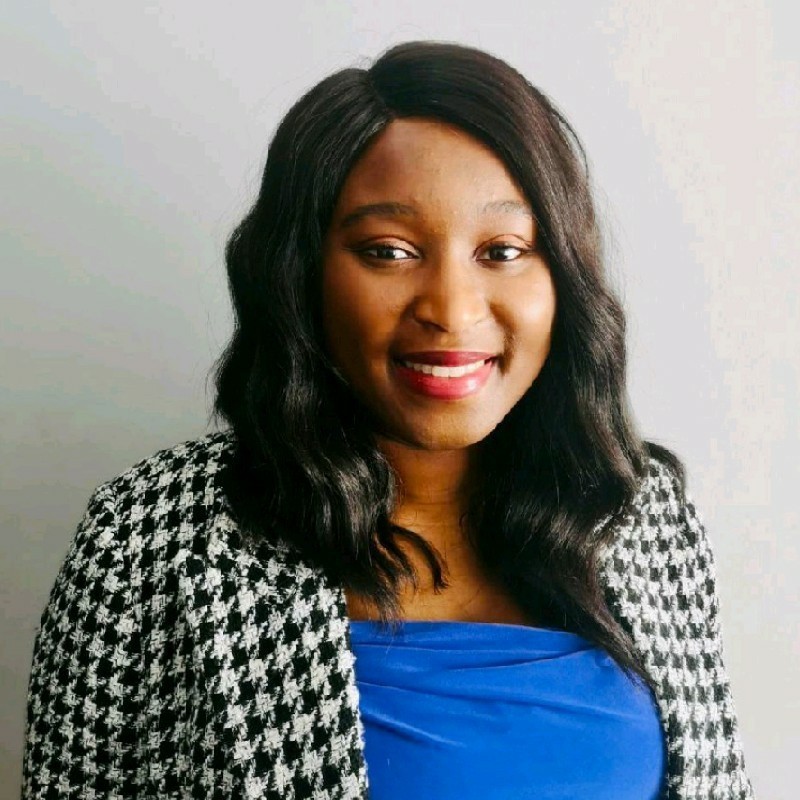 Helina Gyasi has been a student member of the EMGS since 2020. Since joining, she has made many connections within the society, leading to developments in her research, her participation in the Annual Meeting, and recognition for her work. Helina was initially drawn to the EMGS through the society’s specified interest in genomics and environmental toxicology. On her initial impression of the society, she said, Helina Gyasi has been a student member of the EMGS since 2020. Since joining, she has made many connections within the society, leading to developments in her research, her participation in the Annual Meeting, and recognition for her work. Helina was initially drawn to the EMGS through the society’s specified interest in genomics and environmental toxicology. On her initial impression of the society, she said,
“Since my time as a biology student, I have been working to protect environmental health through the use of sound science, and I thought it was really amazing that there was a society like the EMGS that shared the same goals. I remember my first conference in 2020, and being very interested in the many sessions that were covered like rare mutations, epigenomics, genotoxicology, and risk assessment. I’ve really enjoyed being a part of the EMGS, and I’ve really enjoyed the conferences. A lot of the professionals and colleagues were so excited to share their work, to hear from younger students about their own research, and to bring them into the society. I really like the welcoming aspect of the society where you can really share your ideas and get feedback on your work and in your career.”
During both the annual meeting and in her work at the Environment and Climate Change Canada’s National Wildlife Research Center with Dr. Jason O’Brien and research biologist Doug Crump, Helina has had the opportunity to meet many prominent individuals within the EMGS including Carole Yauk, Paul White, Francesco Marchetti, and other associated technicians, biologists, and students, all whom Helina cited as having influenced her academic and professional career.
One major instance of the EMGS impacting Helina’s career development occurred at the 2022 International Conference on Environmental Mutagens (ICEM). Helina acted as co-chair for the symposium “From Genomes to Ecosystems: What are the Ecological Consequences of Genotoxicity?” during which she gave her presentation, “Investigating the Mutagenicity of Polycyclic Aromatic Compounds from the Athabasca Oil Sands Region in River Otters and a Mammalian Cell Line.” Helina described the experience of acting as co-chair, stating,
“I’ve never done something like that before. My supervisor, Dr. Jason O’Brien, who was one of the chairs made it a very good experience. I got the opportunity to introduce the presenters and share my own research in eco-genotoxicology in an actual in-person setting with various professionals in attendance, which was an honor. Before that, my presentations were usually done virtually, because when I started my Master’s, after my first semester, the COVID-19 pandemic hit, so this was my very first real in-person presentation.”
During the 2022 ICEM, Helina was awarded the Student Best Paper Award for her research article, “Microsatellite mutation frequencies in river otters (Lontra Canadensis) from the Athabasca Oil Sands region are correlated to polycyclic aromatic compound tissue burden,” published in February 2022 in Environmental and Molecular Mutagenesis. Regarding her feelings towards that recognition, she said,
“I wasn’t expecting it at all! This was my first first-author paper that I have ever published as a student. To be able to be recognized is really amazing. I guess it’s also one of the perks of being an EMGS member, being able to be recognized for your work in that way. It was really just a great start to my career.”
Helina is currently working on publishing a follow-up paper to her award-winning research article as well as working as an evaluator at Environment and Climate Change Canada where she is conducting risk assessments of new substances to determine if they may be harmful to the environment. When asked how the research and activities of the EMGS impact her current work, she said,
“Although I’m not currently working in the field of mutagenesis or genomics, as a new evaluator at Environment and Climate Change Canada, I’m gaining experience in the field of risk assessment and contributing to program advances through my involvement in a New Approach Methods (NAMs) working group. So, there is work that I would love to share with the society, along with my repertoire of knowledge as I grow as an expert, wherever that research and experience may seem fit.”
As a student member herself, Helina offered a few final words of advice to her peers in the EMGS membership, saying,
“My advice is to step out of your comfort zone and seek engagement in the EMGS. If there is a SIG or a committee of interest, you can reach out to the members and learn more about the group and how you can be an active member. There are so many benefits to being a part of the EMGS. As I mentioned before, there are a lot of inspirational professionals in the society, many of whom are happy to interact and even possibly collaborate with you as a new student or a new investigator. Being a part of the EMGS provides access to a lot of emerging science and knowledge in the field, and it helps you keep up to date with current events which can inform your own study and research when you are an active part of the society.”
This post has not been tagged.
Permalink
| Comments (0)
|
  
|
Posted By Channah Tabor,
Wednesday, October 25, 2023
|
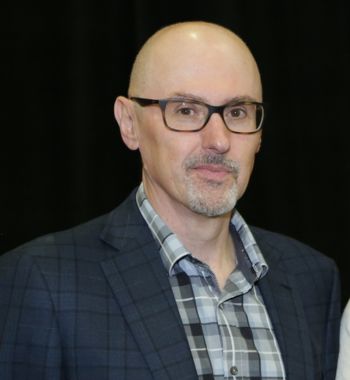 Dr. Francesco Marchetti began attending EMGS meetings as a postdoc in 1992, although the society became relevant to his career prior to his first EMGS meeting. When he was working on his thesis in Italy, his supervisor attended a meeting where she met a professor from Louisiana with whom she began a collaboration. The professor came to do a sabbatical in Italy while Francesco was completing his thesis, and when the professor returned to the U.S., he asked if Francesco was interested in joining his lab. Francesco moved to Shreveport, Louisiana in 1991 and attended his first EMGS meeting the following year. On his first impression of the society, he said,
“As soon as I moved to the U.S., I started attending EMGS meetings because they were the meetings most relevant to the type of work that I was doing, and there was the possibility of meeting people. The authors of papers I had read were suddenly real people in front of me. And when you start as a young scientist, when you go to a huge meeting, you’re always lost, you don’t know anybody and you really feel isolated. At the EMGS, you always feel included and welcomed, so it only took me a couple years to really feel that EMGS was a home for me. It has been very helpful to my career because all the positions I’ve held came about through conversation and meeting people at the Annual Meeting.”
One such meeting took place early in Francesco’s association with the society. As a postdoc, Francesco met former EMGS president Andy Wyrobek, resulting in his move to Lawrence Livermore National Laboratory to work in Dr. Wyrobek’s group in 1994. A three-year position at his lab became a seventeen-year project and a defining period of Francesco’s career. Attending the annual meetings also provided Francesco with opportunities to establish collaborations resulting in what he deemed his best papers. When asked to elaborate on some of the most impactful collaborations he has been a part of, he gave details on three, stating,
“The first one was with Sundar Venkatachalam. I don’t think he’s coming to the EMGS anymore. Last I heard, he’s a project officer at NIH, but at the time when we met, he was a scientist at the University of Tennessee. We started talking and he had a project with a knockout mouse model with some unusual results he couldn’t explain. When he was mating the knockout female to a normal male, he wasn’t getting a lot of pups; but when he was mating the male knockout to a normal female, he was getting a normal number of pups. To me it seemed that what he was experiencing in his data had to do with a defect in female germ cells; thus, we started collaborating and we showed that the knockout was affecting oogenesis specifically and the proper division of chromosomes in the eggs. So, the majority of the eggs that these mice were creating had an abnormal number of chromosomes which was resulting in embryonic loss, and that’s why there were not enough pups born. We put all this together and we published the data in Proceedings of the National Academy of Science in 2009.
“The second collaboration was with Jason Bielas. I know that he has changed his job and that may have taken him in a different direction, but we talked at an EMGS meeting, and I had an idea about looking at mutations in the mitochondrial DNA, and not in the nuclear DNA, and he was very interested. We collaborated, and we published a paper in Nucleic Acids Research in 2016, showing that contrary to my hypothesis, which was that mitochondrial DNA would be very susceptible to the induction of mutations, the opposite was happening and there were fewer mutations induced in the mitochondrial DNA versus the nuclear DNA. That was a surprising finding, but again it turned into a very nice paper that was featured on the cover of this high impact journal.
“And the third one is, of course, my collaboration with Carole Yauk. We started collaborating when I was still in California and one of my first post-docs at Lawrence Berkeley National Laboratory actually came from Ottawa. He had done his PhD at Health Canada and came to do a postdoc with me to study the effects of tobacco smoking in germ cells. That’s how Carole and I started to collaborate. That work turned into a paper that was published in Proceedings of the National Academy of Science in 2011. When the position at Health Canada became available, the idea of growing the collaboration with Carole, not just being collaborators but being co-workers, was one of the deciding factors of my move. And that is a decision that I have never regretted. Carole and I continue to work together and pretty much everything we do is a joint project. I would say right now, even though I spent seventeen years with Andy Wyrobek, that my collaboration with Carole is the most important collaboration I have had, and will have, in my career. I don’t have many years left in my career and I don’t think someone will replace Carole.”
Given the opportunities presented to Francesco through the EMGS, he said that; “with those experiences, I felt that it was also an organization where I needed to give back. That’s why I started to be involved in the workings of the society.” Francesco’s first involvement with the administrative affairs of the society was his term as chair of the Germ Cell Special Interest Group. From there he became chair of the In Vivo Mutagenesis Special Interest Group and was subsequently asked to run for council. While he was not elected as councilor in his first run, he ran again and was successful. While on Council, he was asked to consider becoming the Editor-in-Chief of Environmental and Molecular Mutagenesis, which he accepted. Francesco sat on the Council for over eight years as a Councilor or Editor-in-Chief. On his current role as EMGS president, Francesco shared that he turned down the request for him to run several times before he ran in 2020, to great success.
In a few final words of advice to EMGS membership, Francesco had to say,
“Do not be afraid to put yourself in front of anybody, regardless of how untouchable you think they are. When you are a student and you are wowed by all the papers you read and you find yourself in front of the person who actually wrote that paper, you can feel very intimidated. So, I would say don’t be intimidated. Everybody is very welcoming. I think that is a key feature of EMGS. Established investigators all understand that students and new investigators are the future of the society, and we need to welcome them from the beginning and help build their careers. Make them feel welcome, and they will be more likely to come back and become the leaders of the future. When I was a postdoc, it never crossed my mind that I would be coming back to the EMGS forever, or that one day I would be in the position I’m in today as President of the society. And if it happened for me, it could happen for anybody.”
This post has not been tagged.
Permalink
| Comments (0)
|
  
|
Posted By Channah Tabor,
Wednesday, October 25, 2023
|
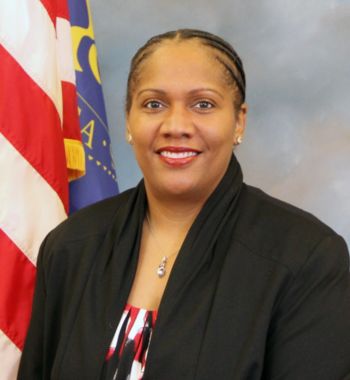 Dr. Kelly Harris joined the EMGS in 2016 as a postdoc working under Dr. Barbara Parsons. During her first year as a postdoc, Barbara approached Kelly with the opportunity to attend the 2016 EMGS annual meeting. While initially hesitant, Kelly accompanied Barbara to the meeting in Kansas City, Missouri. It was here that the EMGS left an impression on Kelly as a unique organization with an emphasis on community and focused research. On the topic of joining the society, Dr. Harris said:
“Usually, you’re just a number in attendance. I will admit that EMGS is all about attending the meetings, but you’re needed to help move the science, move the society. And you can be involved. It can help you! For one, your involvement in the scientific community is always looked at. And it’s great to be in EMGS, because it’s not just something to put on your CV. You’re actually working, you’re actually doing things, you’re really there to touch the sciences and make the connections that you need to get recognition and funding, and you can work on a platform to get that research out there to everyone in the community!”
After joining the EMGS, Kelly has been very active in both scientific and leadership roles within the society. In 2017, Harris became the chair of the Diversity, Equity, and Inclusion Committee, her first leadership role in the society. During her tenure as chair, she got to know the workings of the EMGS, “behind the scenes,” working closely with her committee members. Regarding leadership in the EMGS, Dr. Harris remarked:
“It’s a very close-knit team, so everyone has their own kind of work, but it’s great because you know your ideas are going to be heard. They’re always wanting fresh ideas, so that’s been a wonderful aspect. Say for instance with DEI. We aim to work with other committees, making sure we’re carrying out the mission of the EMGS as far as diversity goes, and making sure we’re reaching all the audiences we can in the scientific community. Now I get to see, for instance, how scholarships are analyzed and evaluated as they come in. One of the scholarships they were doing included a video recording as part of the application process. So, you get to see where ideas are coming in, but also how we can make sure that we’re not missing people who otherwise might not have the opportunity to apply, or even become a member of EMGS. We’ve gone through a lot of evaluation on making sure that we are a diverse society. Not just on race or ethnic background, but on religion and making sure the members of the LGBTQIA are represented and their science…there’s a lot of science around populations of LGBTQIA that’s very important and needs to be highlighted.
“Thankfully, with me working in DEI, moving to council was really easy because I was able to come in and have the focus of, ‘Okay, so how are we making sure we’re reaching the audiences we want.’ And they’re always asking for ideas. Nothing really gets shot down, and especially as a younger researcher it’s great, because not only are you able to work on this side [of administration in the EMGS], but you get mentors, and I didn’t expect that would happen along the way.”
During her term as chair of the DEI, Dr. Harris worked with several past EMGS presidents as members of the committee, including Dr. Ofelia Ana Olivero and Dr. Bevin Engelward. Kelly noted that the guidance and insights of Drs. Olivero and Engelward were immeasurably beneficial to her as an emerging leader, setting her on a course that would eventually lead to EMGS council. She stated:
“When I get to pick their brains about things, not just about being an EMGS member, but also career-wise…it’s great as a young scientist, because I have all of these thoughts and ideas, but navigating how I can actually utilize and be effective in my job and in my community…that’s always a balance. Sometimes, it’s like one is overtaking the other, so trying to get that work-life balance as well as community service balance, that really felt good. Bevin and Ofelia give a lot of insight on how to do that.”
In her own mentoring experience, Kelly was able to provide guidance to a postdoc outside of EMGS. She shared that during his fellowship at NCTR where Harris was working, this postdoc approached her with questions, not only on their area of study, but also on how to move forward in the industry. Dr. Harris said:
“Being able to see that…people coming to me to see how they can move forward in science, especially at the finish, whether it’s going into industry or government, sometimes we lose people. And I get it. It’s very long hours, sometimes for very little pay depending on where you are, but it’s good to see that pipeline still going.”
Most recently, Dr. Harris has been working on the CarcSeq assay to identify prominent cancer mutations in different human tissues. Kelly stated that the assay, “gives us a snapshot over time of where those mutations are, how they may develop, and at what age.” Kelly cited this as her first step into applied science, as previously she was more focused in an academic setting. She was very excited to have a hand in a developing study that has the potential for further research and even utilization in future identification of cancers. Dr. Harris said, “I know that something was left behind that I could be proud of.”
Dr. Harris went on to say how her current career path has been influenced by EMGS in both the sciences shared at the annual meeting, and the networking opportunities presented there. On the subject of the society as a whole, she said:
“A lot of people might view it as a little too linear, working with mutations, or it’s all about genotoxicity, but it helps when you’re trying to develop your niche. In the field, when you come to a society where you have so many experts that can guide you on the new technology, that you can directly use…other conferences I’ve gone to, you’re pinpointing a talk here, a talk there, and they might be spaced out a day or two apart. At EMGS, at every talk you can grab something that can help you. Even if it’s not exactly related, there’s always something where you can go, “oh that might actually work for me.” Or you can find a new collaborator! Especially for me, since more young scientists are there, and we’re always trying to find more places where we can collaborate.”
In closing, Dr. Harris had to say:
“Just like any society, nothing is perfect, but I will admit that we have people who are striving for that perfection as far as how the society is represented population-wise, member-wise, and how we are viewed in the scientific community. I believe the society itself takes it very seriously in terms of pushing the sciences, getting people out there, and really being impactful in the scientific community. A lot of societies…I’m not saying they don’t feel that way, but sometimes that message can get lost. I have never, in the six years I have been a member, seen that message get lost in any aspect of the EMGS.”
This post has not been tagged.
Permalink
| Comments (0)
|
  
|
Posted By Channah Tabor,
Wednesday, October 25, 2023
|
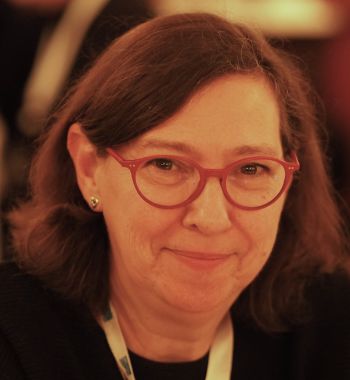 The last Hollaender Course was in December 2019 at the Academy of Scientific Research and Technology in Cairo. Debby Roubicek, current Chair of the Hollaender Outreach Committee (AHOC) describes the excitement of the latest Hollaender course in Cairo.
“[The students] were eager to learn, discuss and talk to me and Paul White. It was a great experience to me as well. We got out of our regular ‘bubbles’ and interacted with different people and different cultures. They learn and we learn. This is always quite an experience.”
Debby Roubicek, PhD, manager of the Toxicology Genotoxicity Sector at the Sao Paulo State Environmental Agency, has been a member of the EMGS since she was a graduate student, and a member of the Brazilian Mutagen Society (MutaGen-Brasil) since its conception in 1989. When she was invited to join the AHOC she thought, “being from a developing country myself, I could contribute with a different view.”
To honor Alexander Hollaender’s legacy, Hollaender courses strive to promote and exchange the best science to these developing countries. Roubicek says:
“Hollaender courses are unique because they give scientists and students from many different places where science is usually not valued, that are not able to go to meetings, to travel abroad, etc., the opportunity to see and talk to expert scientists, along with learning and asking all kind of questions. They are used to seeing these people as “names on a paper,” and they realize that we are ‘normal people’ with whom they can interact. And more importantly, they realize that those experts are coming to see them, and they are coming to their countries just because of them. So, they feel valued and incredibly grateful.”
Hollaender Courses represent the dedication and collective goal that EMGS’s members work towards for global scientific impact on human and environmental health. Due to the unexpected delays of the Sars-CoV2 pandemic, the Hollaender Outreach Committee has decided to dedicate their funds to sponsor international students and trainees for the ICEM 2022 meeting. To make a contribution to the Hollaender Fund, CLICK HERE.
This post has not been tagged.
Permalink
| Comments (0)
|
  
|
Posted By Channah Pool,
Wednesday, October 25, 2023
|
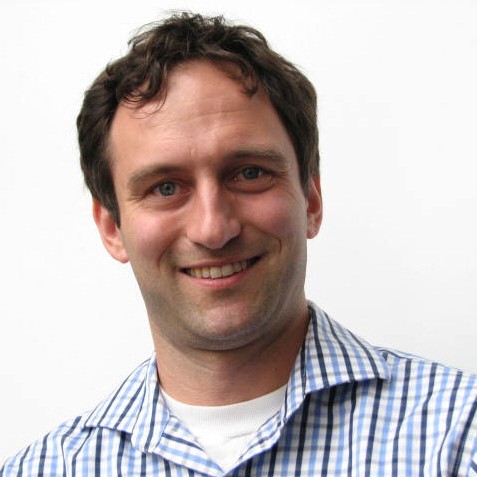 EMGS celebrates its LGBTQIA+ scientists during June Pride Month. In recognition of these scientists and as a final celebration of Pride Month, please enjoy this article spotlighting Zac Nagel, Assistant Professor at the Harvard T.H. Chan School of Public Health and member of the EMGS Diversity and Inclusion Committee. Thank you to Catherine Klein for taking the time to craft these interview questions, and to Zac Nagel for his thoughtful answers.
Can you tell us about your research?
Research in our laboratory is focused on understanding how the pathways responsible for maintaining genome integrity affect our susceptibility to the health effects of DNA damage and the response of cancers to therapy. At the core of our work are functional assays that I originally co-developed during my postdoctoral research in Leona Samson’s laboratory at MIT. Fluorescence multiplex host cell reactivation (FM-HCR) assays utilize fluorescent reporter plasmids modified with site-specific DNA lesions to measure DNA repair capacity in mammalian cells. We are continuing to expand the repertoire of DNA repair processes that can be measured with these reporters. We have now developed reporters for microhomology mediated end joining, translesion synthesis, joining of double strand breaks with chemically complex structures, reporters that can distinguish between subpathways of nucleotide excision repair, and reporters that measure the accuracy of double strand break repair.
We are applying this technology in several areas where genome integrity is emerging as an important and underexplored dimension of public health. These applications include screening engineered nanomaterials for potential genotoxicity, determining how inter-individual differences in DNA repair capacity affect susceptibility to lung cancer and clinical radiosensitivity, and predicting therapeutic responses in glioblastoma multiforme. We have several exciting collaborations with EMGS members that are focused on basic mechanisms of DNA damage tolerance and repair. For example, we’re investigating structure-function relationships in REV7 together with Graham Walker. We have also been studying DNA repair mechanisms in cancer cells with Natalie Gassman and Joann Sweasy, and we are measuring DNA repair in populations in collaboration with Bevin Engelward. In the longer term we hope this work will collectively advance personalized medicine by providing insights into individual susceptibilities and determining which therapies are most likely to work for individual cancer patients.
When did you know what kind of career that you wanted?
I wish I could say I always knew I wanted to be a scientist, but in fact curiosity is what came first. Once I started doing undergraduate research, I realized that doing experiments was the most gratifying way to satisfy my curiosity. And as I got further into my career, I realized it was also possible to make useful tools and answer important questions about human health. That’s what I do now in my dream job, and it makes sense in hindsight, but I’d never have guessed I’d be here 20 years ago.
Did your career involve any missteps, or divergences?
I’ve taken a winding path, but I don’t regret it. I got my start studying photosynthesis at the University of Michigan. My PhD project in chemistry was about the role of quantum tunneling in enzymatic catalysis in Judith Klinman’s laboratory at UC Berkeley. So, moving to Leona Samson’s laboratory at MIT for my postdoc was quite a leap, but that experience opened my eyes to the possibility that we can do basic and applied research at the same time. Now at the Harvard T.H. Chan School of Public Health, I find I can apply everything I learned along the way, which gives me a unique perspective on public health.
Were there any LGBTQ issues that impacted your career choices?
As we close out pride month, I’m grateful for the progress we’ve made since I started my career. Being a member of this community is a source of joy for me, and fortunately it did not impact my career choice even though a common perception in the late 90s was that being openly gay could be a career killer. For many of us it does come with some challenges, including growing up worrying about how we’re perceived, and whether we’ll be welcome. Since peer review is at the core of the scientific enterprise, I think this primes us for experiencing the imposter syndrome. For me the antidote has been to surround myself with supportive people, and I’m proud to say EMGS has been a wonderfully supportive community.
What advice would you offer to upcoming young scientists?
Change your mind often. It’s good to keep your mind flexible so you don’t miss the message when some surprising or even disappointing data come from your experiments. I think this is good advice for life in general; when new information comes in, we should be open to the possibility that we’ve been wrong about something, even if we’re really attached to it. Whether it’s a trivial matter or a major life decision, I find that changing my mind as I learn new things is one of the most satisfying exercises!
This post has not been tagged.
Permalink
| Comments (0)
|
  
|
Posted By Channah Tabor,
Wednesday, October 25, 2023
|
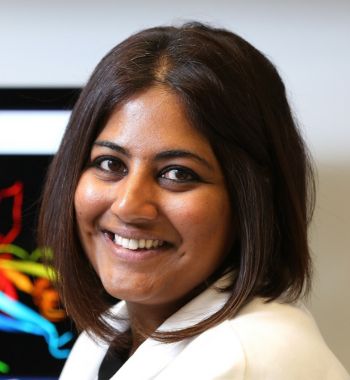 EMGS Young Scientist Award Winners: Where Are They Now? EMGS Young Scientist Award Winners: Where Are They Now?
In 2018, Dr. Aishwarya Prakash won the EMGS Young Scientist Award, and presented at the 2018 EMGS Annual Meeting in San Antonio, Texas. However, her EMGS journey began a couple years before.
Prakash began an independent research career as a tenure-track Assistant Prof. at the University of South Alabama Mitchell Cancer Institute in 2016. Then, her laboratory was interested in two DNA repair pathways: the base excision repair (BER) pathway, which is involved in the repair of small, non-bulky DNA lesions and the mismatch repair (MMR) pathway, which is involved with recognizing and removing erroneous DNA base misincorporations, insertions, and deletions.
Prakash describes that at first she was skeptical about joining EMGS, but after attending her first meeting in 2017, she says, “I was hooked, and I realized how committed the society is to new investigators and its members. The opportunities are boundless.”
Today, Prakash’s research program is focused on understanding the structural basis of protein interactions during mismatch DNA repair and base excision repair. She is in the process of expanding her research endeavors to combine the impact of environmental toxicants on these cellular repair processes.
Prakash describes that “Winning this award helped me during the tenure/promotion process as well as helped me build confidence in my presentation skills and research program.”
As far as the expansion of her network through EMGS, Prakash says that it is a truly unique environment to be a part of.
“Over the past few years, I have met so many scientists via EMGS many of whom I would have never come across if it had not been for the society’s annual meetings and committees. I am able to interface regularly with scientists from industry, academia, and several federal agencies.”
When asked what Prakash’s most significant scientific finding has been since joining EMGS, she says: “If I had to pick one, we have identified a new role for NEIL1, a DNA glycosylase that is involved with catalyzing the first steps of base excision repair. In this new role, NEIL1 appears to interact with each of its binding partners (that are involved with cellular processes such as replication and transcription) in unique ways. As an example of this, we observed that NEIL1 can disrupt the PCNA homotrimer and the mitochondrial SSB homotetramer upon interaction possibly presenting a switch between replication and repair.”
But beyond the lab and hours of investigation, Prakash likes to spend her days off with her now 8-month-old daughter either at home, or on the beach: “Both she and I love the outdoors and go for walks multiple times a day when time permits.”
EMGS is committed to helping young scientists - our future - make critical career transitions. At our Annual Meeting, we feature the EMGS Young Scientist Award, a prestigious prize for a new investigator embarking on an independent scientific career and the opportunity to give a plenary talk at our annual meeting.
This post has not been tagged.
Permalink
| Comments (0)
|
|
 2025 EMGS Program Chair
2025 EMGS Program Chair